Best Practices for Time Management in Business
Mastering Productivity and the Eisenhower Matrix
Best Practices for Time Management in Business: Mastering Productivity
I my book effective time management is a cornerstone of business success. As organisations grow increasingly complex, managing priorities, deadlines, and competing demands becomes essential for leaders, teams, and individuals alike.
By adopting structured time management strategies, businesses can enhance productivity, reduce stress, and foster innovation. This article explores the best practices for time management, highlighting the Eisenhower Matrix as a decision-making tool and why paper shuffling belongs in the trash—literally and metaphorically.
1. Understand and Prioritise Your Tasks
Time management begins with understanding what tasks truly matter. It's not just about doing things right—it’s about doing the right things. This is where the Eisenhower Matrix becomes invaluable and I have used it in all of my businesses to great effect and encourage my clients to embrace embedding it into their onboarding of new staff processes.
The Eisenhower Matrix Explained
The Eisenhower Matrix is a decision-making framework that categorises tasks into four quadrants based on urgency and importance:
- Quadrant 1: Urgent and Important
Tasks that require immediate attention. Examples include crisis management or meeting critical deadlines.
Action: Do these tasks now. - Quadrant 2: Important but Not Urgent
These are tasks that contribute to long-term goals, such as strategic planning or professional development.
Action: Schedule time to work on these. - Quadrant 3: Urgent but Not Important
Often distractions that masquerade as priorities, like unimportant emails or low-value meetings.
Action: Delegate or minimise. - Quadrant 4: Neither Urgent nor Important
Timewasters like excessive social media use or trivial busywork.
Action: Eliminate or avoid entirely.
By organising tasks into these quadrants, individuals and teams can focus their energy on what truly drives success, rather than being trapped in cycles of reactionary work.
Training Tip
If you have employees who you know have bad timewasting habits, set up a whiteboard with a blank Eisenhower Matrix and make a set of tasks on sticky notes, including the timewasting ones that you know are prevalent in your organisation e.g. “Unfocused Web Surfing” etc, then ask your staff to participate in putting the right actions in the correct quadrants of the Matrix.
2. Embrace Digital Over Physical: The Death of Paper Shuffling
Paper shuffling—reorganising documents repeatedly without productive action—is a notorious productivity killer. In the digital era, this outdated practice has no place in efficient businesses.
The simple process of receiving a letter (or e-mail for that fact) and reading it from start to finish only to file it for later and then to read it all again is a huge time waster, replace this with a quick skim and file for later if you aren’t going to deal with it now (Urgent and Important).
Why Paper Shuffling Must Go
- Inefficiency: Searching through physical files wastes time compared to digital solutions that enable instant retrieval.
- Error-Prone: Misfiled documents lead to delays and lost information.
- Environmental Impact: Excessive paper use contributes to environmental degradation.
Modern Solutions
Adopt digital tools and systems to manage information, streamline workflows, and eliminate the need for paper:
- Use project management software (e.g., Trello, Asana) for tracking tasks.
- Implement document management systems (e.g., Google Drive, SharePoint MDI Cloud) for quick access to files.
- Leverage automation tools for repetitive processes, such as invoicing or reporting.
By digitising operations, businesses can eliminate clutter, save time, and create a more efficient, scalable work environment.
3. Time Blocking and Batch Processing
Time blocking involves allocating specific blocks of time for focused work on particular tasks, while batch processing groups similar activities together to reduce context switching. Both methods help maintain momentum and minimise interruptions.
Practical Applications
- Reserve mornings for deep work, such as strategic planning or creative projects.
- Batch repetitive tasks—such as responding to emails or attending meetings—into dedicated time slots.
- Use calendar tools to enforce these boundaries, ensuring others respect your focus time.
4. Learn to Say No
One of the most underrated time management skills is the ability to decline tasks that don’t align with your priorities. Overcommitment leads to burnout and diluted effectiveness. Evaluate every new request using the Eisenhower Matrix to decide whether to accept, delegate, or reject it.
5. Regularly Review and Adjust
Time management is not a one-and-done effort. It requires ongoing evaluation and adjustment. Conduct weekly reviews to:
- Assess what worked well and what didn’t.
- Realign tasks with current business goals.
- Update your schedule based on new priorities or unforeseen challenges.
6. Foster a Culture of Time Efficiency
Time management should not be an individual effort—it must be embedded into the organisation’s culture. Encourage team members to:
- Avoid unnecessary meetings.
- Communicate effectively to reduce misalignment.
- Use collaborative tools to minimise delays and redundancy.
Conclusion
Mastering time management in business is a dynamic process that combines structured tools like the Eisenhower Matrix with the discipline to eliminate inefficiencies like paper shuffling. By prioritising effectively, embracing digital solutions, and fostering a culture of productivity, businesses can achieve their goals more efficiently. Remember, time is the ultimate non-renewable resource—invest it wisely.
"A man who dares to waste one hour of time has not discovered the value of life" Charles Darwin
Ask me about my inspirational Time Management Workshops. paul@nortonbc.co.uk
We need your consent to load the translations
We use a third-party service to translate the website content that may collect data about your activity. Please review the details in the privacy policy and accept the service to view the translations.
